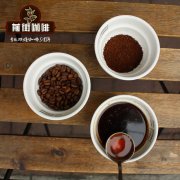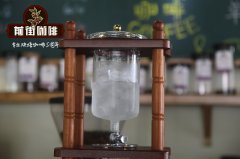The story of the flavor characteristics of Indonesian wet planing coffee beans

Professional coffee knowledge exchange more coffee bean information please follow the coffee workshop (Wechat official account cafe_style)
Do those beans in Indonesia use wet planing? What flavor does wet planing highlight? What is wet planing?
Indonesian wet planing (Wet-Hulling), that is, when the raw beans are half dried and the moisture content is as high as 30% Murray 50%, the seed shells are removed first, and then continue to be dried in order to solve the dilemma of drying for too long. In this way, because the drying time is shortened to two to four days, the fermentation period of coffee beans is shortened, and the acidity decreases a lot, but the relative thickness increases, with obvious aromas of caramel and fruit, and even with aromas of herbs or herbs and wood. this is a unique regional fragrance of Sumatra. Indonesian wet planing method
However, the effect of early removal of the seed shell is that the raw beans are half dry without the last two layers of protection (note: coffee beans' four layers of protection: pericarp, pectin, seed shell, silver skin), which is like taking off your clothes and basking in the sun. Although the wet planing method solves the problem of drying time, the relative probability of raw beans contaminated by molds, fungi and yeasts is also greatly increased. But paradoxically, these factors have become the key factors in creating Manning's special aroma.
Another feature of the Indonesian wet planing method is the increase in the probability of the so-called "sheep's hoof beans". Because the raw beans are planted with a shell planer in the semi-soft stage when they are still very wet, the fragile soft wet raw beans are very easily cracked, broken or scratched by mechanical force, resulting in the so-called sheep's foot beans and scratched beans, resulting in the deterioration of the selling phase of raw beans.
Indonesian wet planing (Wet-Hulling) is the traditional treatment of Indonesian Sumatran coffee, that is, when the raw beans are half-dried and the moisture content is as high as 30% and 50%, the seed shells are removed first, and then continue to be dried in order to solve the dilemma of drying for too long. As the drying time is shortened to two to four days, the fermentation period of coffee beans is shortened, and the acidity decreases a lot, but the relative thickness increases, with obvious aromas of caramel and fruit, even with aromas of herbs or grass and wood. this is the unique regional fragrance of Sumatra.
However, the effect of early removal of the seed shell is that the raw beans are half dry without the last two layers of protection (note: coffee beans' four layers of protection: pericarp, pectin, seed shell, silver skin), which is like taking off your clothes and basking in the sun. Although the wet planing method solves the problem of drying time, the relative probability of raw beans contaminated by molds, fungi and yeasts is also greatly increased. Paradoxically, however, these factors have become the key factors in creating Manning's special aroma.
Important Notice :
前街咖啡 FrontStreet Coffee has moved to new addredd:
FrontStreet Coffee Address: 315,Donghua East Road,GuangZhou
Tel:020 38364473
- Prev

How many kinds of coffee fruit treatments are there? Sun, half-water washing, half-sun washing, whole water washing, honey treatment
Professional coffee knowledge exchange more coffee bean information please follow the coffee workshop (Wechat official account cafe_style) how many kinds of coffee fruit treatment? What is the difference between sunbathing, half-washing, half-sunbathing, full-washing and honey treatment? What's the difference between different treatments? It refers to the process of turning ripe red fruits into dried raw beans. Each treatment has its own advantages and disadvantages, and is affected by the natural origin.
- Next

Characteristic Story of Indonesian Wet planing Mantenin Coffee beans
Professional coffee knowledge exchange more coffee bean information please follow the coffee workshop (Wechat official account cafe_style) what beans are suitable for Indonesian wet planing? What is wet planing? What are the characteristics of wet planing Manning? Wet planing is a Sumatran treatment method. The common method of washing and sunbathing is to wait until the coffee bean is dehydrated and hardened and the moisture content is 1213% before grinding off the shell.
Related
- Detailed explanation of Jadeite planting Land in Panamanian Jadeite Manor introduction to the grading system of Jadeite competitive bidding, Red bid, Green bid and Rose Summer
- Story of Coffee planting in Brenka region of Costa Rica Stonehenge Manor anaerobic heavy honey treatment of flavor mouth
- What's on the barrel of Blue Mountain Coffee beans?
- Can American coffee also pull flowers? How to use hot American style to pull out a good-looking pattern?
- Can you make a cold extract with coffee beans? What is the right proportion for cold-extracted coffee formula?
- Indonesian PWN Gold Mandrine Coffee Origin Features Flavor How to Chong? Mandolin coffee is American.
- A brief introduction to the flavor characteristics of Brazilian yellow bourbon coffee beans
- What is the effect of different water quality on the flavor of cold-extracted coffee? What kind of water is best for brewing coffee?
- Why do you think of Rose Summer whenever you mention Panamanian coffee?
- Introduction to the characteristics of authentic blue mountain coffee bean producing areas? What is the CIB Coffee Authority in Jamaica?

